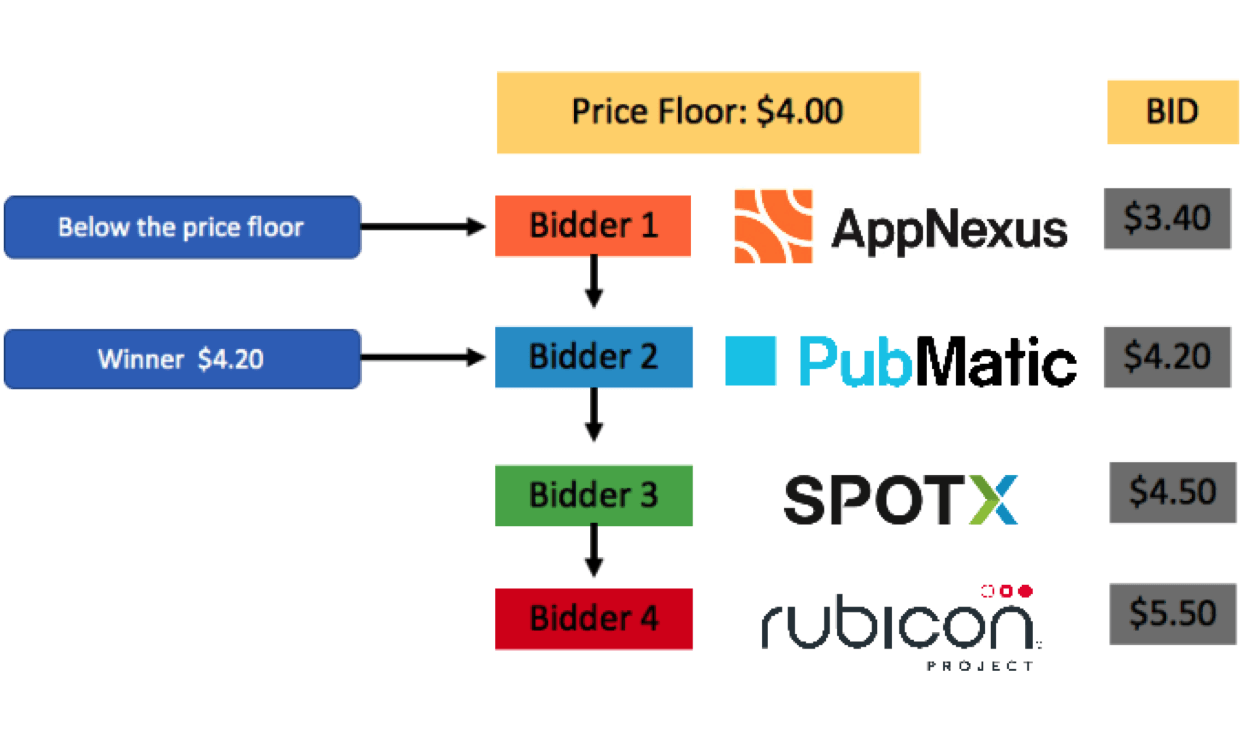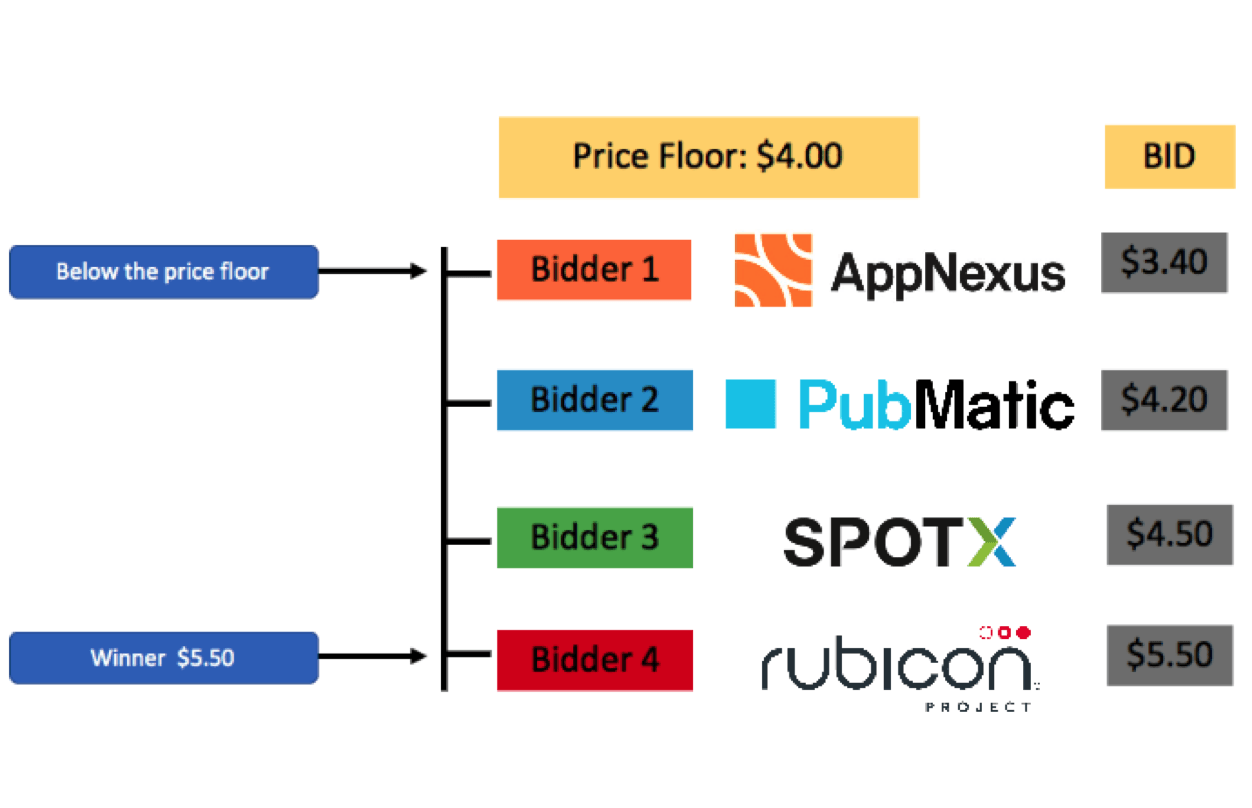Header bidding has been a buzz word on everyone’s lips for quite some time now. The topic has been heavily discussed within the video monetization industry since its inception. However, with the wealth of information available on many of the industry’s leading publications, there is still a gap of knowledge and lack of understanding on the publisher front.
The foundation of the open source header bidding solution, Prebid, has allowed publishers and advertisers to close the knowledge gap and develop a much better understanding of the workings of header bidding, how it differentiates from the traditional “waterfall” method along with the benefits it provides.
If you’re looking to get started or want to learn more about this method of bidding you’ve come to the right place. In this blog we’ll take you through the different types of auctions, how they can benefit you and how our player helps overcoming the potential drawbacks of waterfall bidding.
Header bidding: what is it and how does it work
Header bidding is an innovative programmatic advertising method that serves as an alternative to the traditional “waterfall” method. It gives publishers a chance to offer a particular ad space out to several SSP’s or Ad exchanges simultaneously.
Waterfalling explained
First, let’s have a look at the more traditional waterfall method. The process of the publisher trying to sell their advertising inventory via a waterfall looks something like this:

First of all, the ad unit will put out an ad request once a user visits a page on your site. In most cases, directly sold campaigns will take precedence over anything programmatically sold. The available inventory will be served via the Publisher ad server. If there isn’t a response or if the response is below the price floor for the inventory offered, it will then offer the inventory to the first demand partner in the chain. If there’s no response from the first Ad exchange/SSP, it will then be offered to the second in the chain, and so on.
The demand partners in the chain will usually be determined by the Publisher. Unfortunately, in many cases, priority isn’t always given to the partner with the highest price. This means that the revenue potential isn’t realized as with the example above, the winner of the auction wasn’t the highest bidder in that instance.
Header Bidding explained
Now let’s move on to header bidding. This method provides publishers with an opportunity to offer their inventory out to all bidders/demand partners simultaneously. This ensures that they receive the highest possible bid at that time. There’s even an option to allow the highest bidder to compete with directly sold inventory.
Here is what header bidding looks like:

A header bidding auction differs from a waterfall auction. Instead of each demand partner and ad exchange hosting their own auction, one at a time, at different priority levels within the publisher ad server, header bidding will provide all the demand partners to bid simultaneously at the same priority.
This allows equal opportunity to all parties on the publisher’s premium inventory. Publishers will then receive higher yield and revenue due to the increased competition.
Header Bidding: the benefits for publishers
So, how do the benefits translate to publishers? Here are a few.
Better yield
Without having to rely on a single SSP, the overall yield will increase by simpler allocating impressions in a smarter way and of course boosting fill rate along with it.
Higher revenue
Equally as important, publishers can increase their prices on what they are currently charging on premium inventory as this can be offered to more bidders.
Improved control
Because header bidding allows all demand sources to bid all at once, publishers can then control which demand sources are allowed to participate in the header bidding auction.
Improved ad targeting and reach
Header bidding allows advertisers to have a better understanding of the publisher’s inventory, impressions along with the demographics of the publisher user base. By taking advantage of this data, advertisers are able to optimize their targeting strategy in an increasingly efficient manner. This can result in buyers being able to reach their audience at scale.
Advertisers will also have the opportunity to have a first look at the impressions providing a much fairer auction ecosystem compared to that of a waterfall.
Header bidding: the drawbacks for publishers
What are the cons of header bidding to the publisher?
Technical knowledge and more work
There’s a requirement for Publishers to have technical resource to be able to build out the header bidding code to be placed on their site.
Latency
One potential disadvantage of header bidding is latency. Simultaneous bidding can slow down the page load speed. This can have an effect on viewability, user experience and organic search performance.
Overcoming the drawbacks of Header Bidding
We’ve created a Prebid Player Bidding solution for instream and outstream video that enables publishers to reap the rewards of a header bidding auction without having to worry about the drawbacks associated with the display market. We’ve overcome this by integrating Prebid for video directly within our player environment. This allows publishers to easily add their bid adapters to the platform without needing to possess any technical knowledge or to allocate resource towards building out their own header bidding solution.
With Player Bidding, the Prebid auction takes place within the player, meaning the Publisher doesn’t need to add/maintain any code to their headers, providing the additional benefit of not having a negative effect on page loading times.



